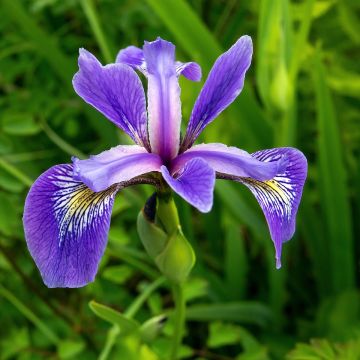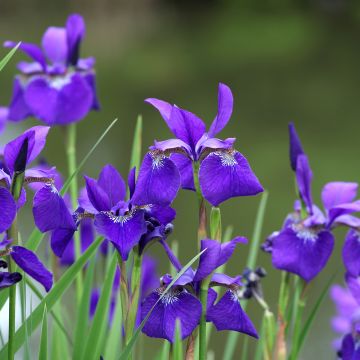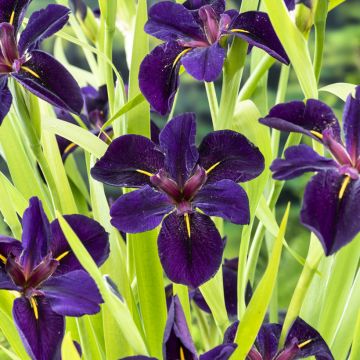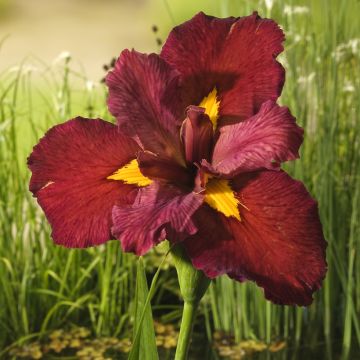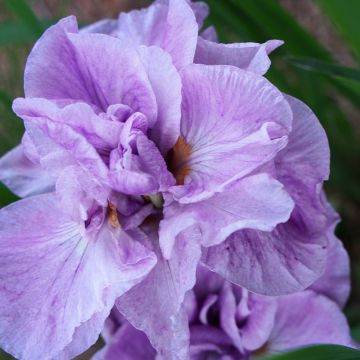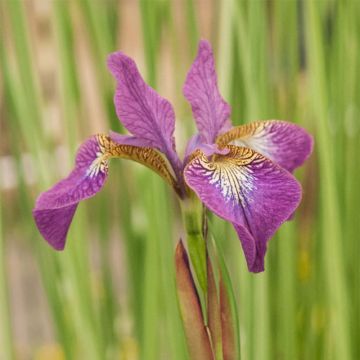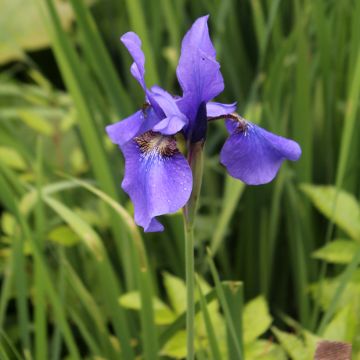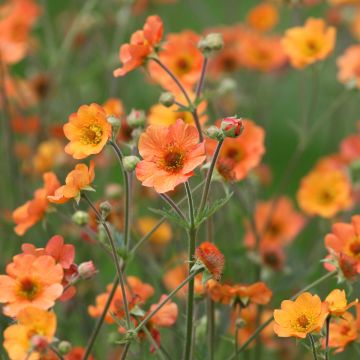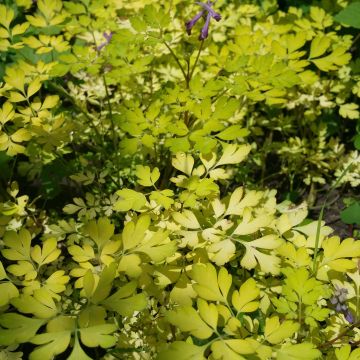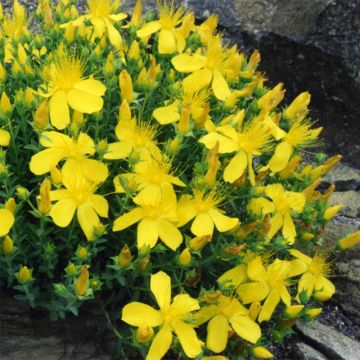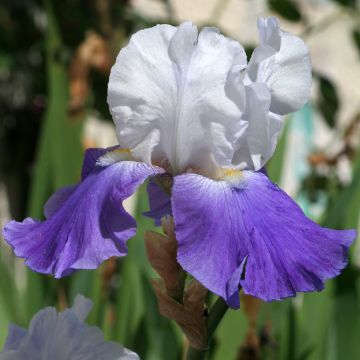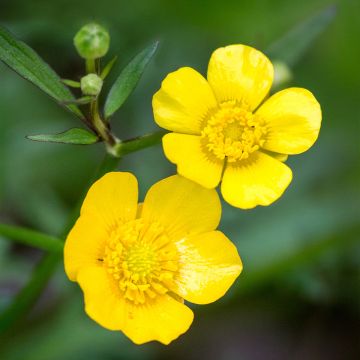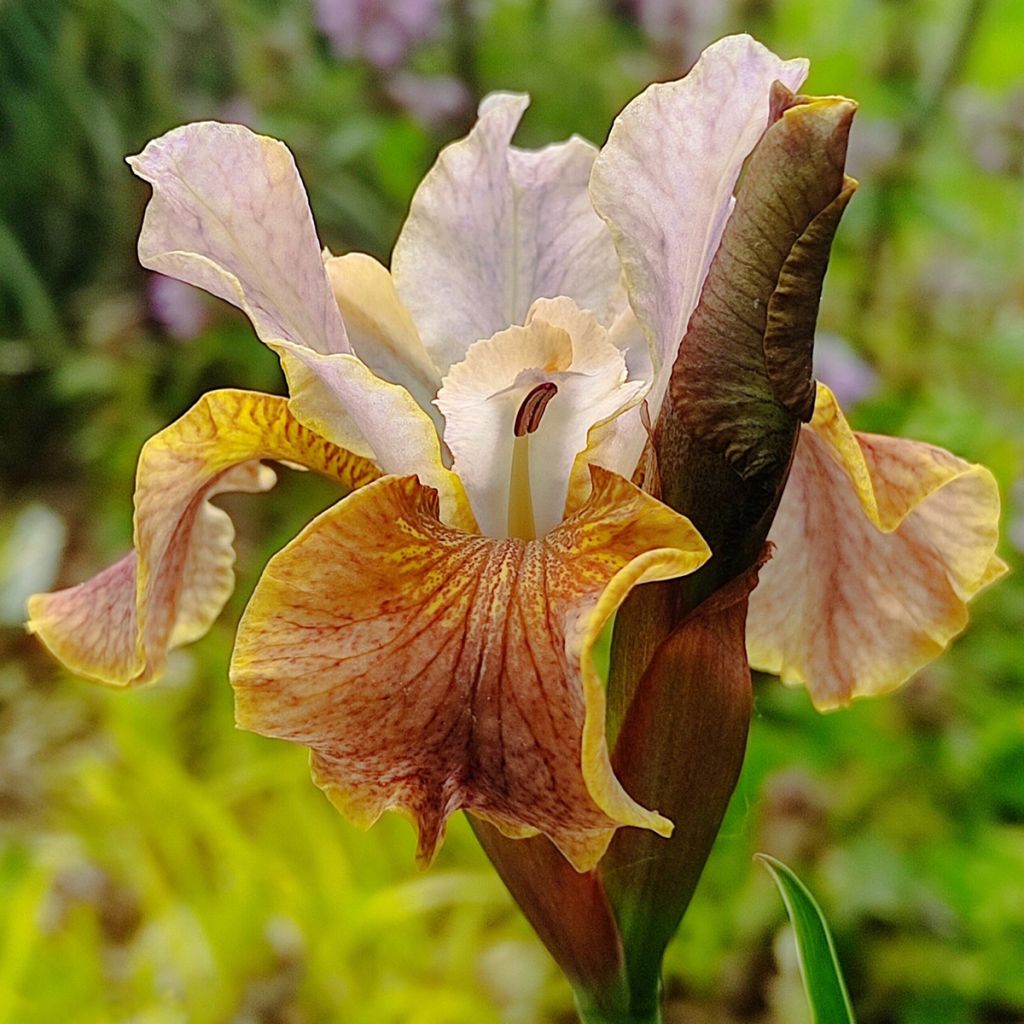

Iris sibirica Colonel Mustard - Siberian Iris
Iris sibirica Colonel Mustard - Siberian Iris
Iris sibirica Colonel Mustard
Siberian Iris, Siberian Flag
Special offer!
Receive a €20 voucher for any order over €90 (excluding delivery costs, credit notes, and plastic-free options)!
1- Add your favorite plants to your cart.
2- Once you have reached €90, confirm your order (you can even choose the delivery date!).
3- As soon as your order is shipped, you will receive an email containing your voucher code, valid for 3 months (90 days).
Your voucher is unique and can only be used once, for any order with a minimum value of €20, excluding delivery costs.
Can be combined with other current offers, non-divisible and non-refundable.
Home or relay delivery (depending on size and destination)
Schedule delivery date,
and select date in basket
This plant carries a 12 months recovery warranty
More information
We guarantee the quality of our plants for a full growing cycle, and will replace at our expense any plant that fails to recover under normal climatic and planting conditions.
Would this plant suit my garden?
Set up your Plantfit profile →
Description
Iris sibirica 'Colonel Mustard' is a Siberian iris with shimmering colours in caramel tones. Its flowers combine golden bronze with pale-yellow, with a touch of mauve in the centre for a beautiful effect. They bloom in June and July on a medium-sized upright plant. The so-called Siberian irises are beautiful plants for wet or cool soil, appreciated for the grace and elegance of their flowers and fine foliage. They form sculptural and vigorous clumps, as beautiful in a contemporary garden as in a romantic one, and are ideal near water features.
Iris sibirica 'Colonel Mustard' is a rhizomatous and deciduous perennial plant, with a clumping habit from spring onwards. It belongs to the Iridaceae family. It is one of the many cultivars obtained from I. sibirica, native to Central Europe, Eastern Europe, and Turkey, but absent from Siberia, and I. sanguinea, present in China, Siberia, Japan, Manchuria, and Korea. This iris reaches a height of 70cm (28in), 1m (3ft) when in bloom, and the clump spreads over 50 to 70cm (20 to 28in). Its growth is moderate, slower than that of I. germanica. 'Colonel Mustard' has an upright, elegant habit with dense clumps. The foliage consists of long, narrow, green-grey leaves. In early summer, the flower stems project above the foliage, with 3 sepals and 3 petals arranging themselves and succeeding from the tip of the stem to the lower branches. They have a coppery bronze and pale-yellow colour, marked with mauve. This iris spreads by rhizomes.
The 'Colonel Mustard' Siberian iris tolerates a wet situation, for example, on a riverbank, as long as it is not permanently submerged. It can also be grown in ordinary mulched garden soil, as long as it remains moist. It prefers acidic to neutral (pH 4.5 to 8), rich, and well-drained soil. It is irreplaceable on the edge of a water feature or stream, or simply in moist soil. Its grace is perfect for romantic gardens, English gardens, and other mixed borders. It can be planted with summer snowflake, camassia, daylilies, delphiniums, and columbines, with which it forms a perennial flower bed from April to July. In a contemporary garden, it can be planted on the edge of a water feature alongside hostas or astilbes in partial shade. The shimmering colours of 'Colonel Mustard' go wonderfully well with purple and mauve blooms.
Note: The wild Siberian iris (Iris sibirica L.) is an endangered and protected species that must be respected. Horticultural Siberian irises are the result of hybridisation between different species of the Sibericae series (I. sanguinea, etc.). Their flowers are larger than those of wild forms and come in various colours. Several hundred named cultivars have been registered.
Report an error about the product description
Flowering
Foliage
Plant habit
Botanical data
Iris
sibirica
Colonel Mustard
Iridaceae
Siberian Iris, Siberian Flag
Cultivar or hybrid
Other Siberian Iris
View all →Planting and care
Iris sibirica 'Colonel Mustard' can tolerate a moist situation, such as on a riverbank, as long as it is not permanently submerged. It can also be grown in ordinary garden soil, with mulching and watering every 15 days in summer. It prefers rich, well-drained, acidic to neutral (pH 4.5 to 8) soil. Soil that is too clayey, too chalky, or too sandy can be improved by adding a good amount of humus (well-decomposed compost). Alkaline soil can be slightly acidified by adding ericaceous soil or turf, pine needles, or sulphur flower
Siberian irises need a sunny location to flower, with at least 6 hours of daily sunlight. In the hottest regions, light shading during hot hours may be beneficial. It is best to plant during the dormant period, from late September to mid-April, outside of freezing periods. In hot climates, planting can be done in September. In regions with cold winters, planting should be done at the beginning of vegetation, in late March or April. (They will only flower the following year). Planting in August can be an alternative.
Plant Siberian iris rhizomes at a depth of 3 to 5cm (1 to 2in). Siberian irises can remain in place without division for longer than bearded irises. They should only be divided every 5 to 10 years, when the clump no longer flowers in the centre or forms a crown. Allow space for the clump to develop. Fertilise with an NPK 10-10-10 type fertiliser at the start of vegetation and after flowering in June. On young clumps, systematically cut off the faded flower stems to prevent exhaustion. On well-established clumps, remove the stems to prevent spontaneous seedlings of non-true-to-type seedlings.
Planting period
Intended location
Care
Planting & care advice
This item has not been reviewed yet - be the first to leave a review about it.
Similar products
Haven't found what you were looking for?
Hardiness is the lowest winter temperature a plant can endure without suffering serious damage or even dying. However, hardiness is affected by location (a sheltered area, such as a patio), protection (winter cover) and soil type (hardiness is improved by well-drained soil).

Photo Sharing Terms & Conditions
In order to encourage gardeners to interact and share their experiences, Promesse de fleurs offers various media enabling content to be uploaded onto its Site - in particular via the ‘Photo sharing’ module.
The User agrees to refrain from:
- Posting any content that is illegal, prejudicial, insulting, racist, inciteful to hatred, revisionist, contrary to public decency, that infringes on privacy or on the privacy rights of third parties, in particular the publicity rights of persons and goods, intellectual property rights, or the right to privacy.
- Submitting content on behalf of a third party;
- Impersonate the identity of a third party and/or publish any personal information about a third party;
In general, the User undertakes to refrain from any unethical behaviour.
All Content (in particular text, comments, files, images, photos, videos, creative works, etc.), which may be subject to property or intellectual property rights, image or other private rights, shall remain the property of the User, subject to the limited rights granted by the terms of the licence granted by Promesse de fleurs as stated below. Users are at liberty to publish or not to publish such Content on the Site, notably via the ‘Photo Sharing’ facility, and accept that this Content shall be made public and freely accessible, notably on the Internet.
Users further acknowledge, undertake to have ,and guarantee that they hold all necessary rights and permissions to publish such material on the Site, in particular with regard to the legislation in force pertaining to any privacy, property, intellectual property, image, or contractual rights, or rights of any other nature. By publishing such Content on the Site, Users acknowledge accepting full liability as publishers of the Content within the meaning of the law, and grant Promesse de fleurs, free of charge, an inclusive, worldwide licence for the said Content for the entire duration of its publication, including all reproduction, representation, up/downloading, displaying, performing, transmission, and storage rights.
Users also grant permission for their name to be linked to the Content and accept that this link may not always be made available.
By engaging in posting material, Users consent to their Content becoming automatically accessible on the Internet, in particular on other sites and/or blogs and/or web pages of the Promesse de fleurs site, including in particular social pages and the Promesse de fleurs catalogue.
Users may secure the removal of entrusted content free of charge by issuing a simple request via our contact form.
The flowering period indicated on our website applies to countries and regions located in USDA zone 8 (France, the United Kingdom, Ireland, the Netherlands, etc.)
It will vary according to where you live:
- In zones 9 to 10 (Italy, Spain, Greece, etc.), flowering will occur about 2 to 4 weeks earlier.
- In zones 6 to 7 (Germany, Poland, Slovenia, and lower mountainous regions), flowering will be delayed by 2 to 3 weeks.
- In zone 5 (Central Europe, Scandinavia), blooming will be delayed by 3 to 5 weeks.
In temperate climates, pruning of spring-flowering shrubs (forsythia, spireas, etc.) should be done just after flowering.
Pruning of summer-flowering shrubs (Indian Lilac, Perovskia, etc.) can be done in winter or spring.
In cold regions as well as with frost-sensitive plants, avoid pruning too early when severe frosts may still occur.
The planting period indicated on our website applies to countries and regions located in USDA zone 8 (France, United Kingdom, Ireland, Netherlands).
It will vary according to where you live:
- In Mediterranean zones (Marseille, Madrid, Milan, etc.), autumn and winter are the best planting periods.
- In continental zones (Strasbourg, Munich, Vienna, etc.), delay planting by 2 to 3 weeks in spring and bring it forward by 2 to 4 weeks in autumn.
- In mountainous regions (the Alps, Pyrenees, Carpathians, etc.), it is best to plant in late spring (May-June) or late summer (August-September).
The harvesting period indicated on our website applies to countries and regions in USDA zone 8 (France, England, Ireland, the Netherlands).
In colder areas (Scandinavia, Poland, Austria...) fruit and vegetable harvests are likely to be delayed by 3-4 weeks.
In warmer areas (Italy, Spain, Greece, etc.), harvesting will probably take place earlier, depending on weather conditions.
The sowing periods indicated on our website apply to countries and regions within USDA Zone 8 (France, UK, Ireland, Netherlands).
In colder areas (Scandinavia, Poland, Austria...), delay any outdoor sowing by 3-4 weeks, or sow under glass.
In warmer climes (Italy, Spain, Greece, etc.), bring outdoor sowing forward by a few weeks.






























